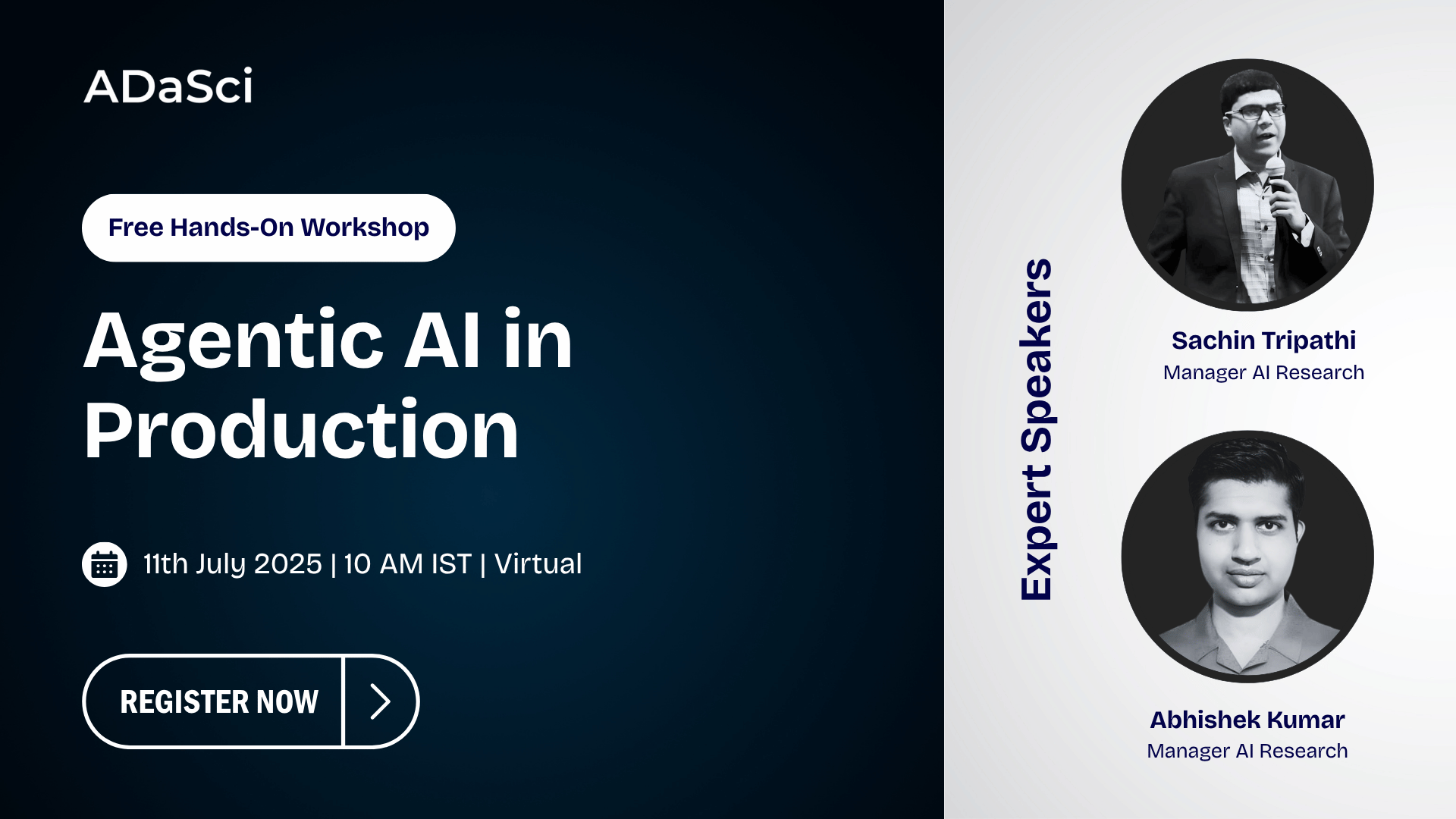Top AI Research Papers of 2024

Explore more from ADaSci
The world of artificial intelligence (AI) continues to evolve at an astonishing pace. In 2024, groundbreaking research has pushed the boundaries of AI applications, theory, and deployment. Below, we highlight ten of the most influential AI research papers this year, providing insights into their contributions and practical implications.
1. Mixtral of Experts (8th Jan 2024)
This paper introduces Mixtral 8x7B, an innovative Sparse Mixture of Experts (SMoE) language model that combines efficiency with powerful performance. The model uses 8 expert networks per layer but activates only 2 experts per token, resulting in 47B total parameters while using just 13B active parameters during inference.
Despite this efficient design, Mixtral outperforms larger models like Llama 2 70B across multiple benchmarks, particularly excelling in mathematics, coding, and multilingual tasks. The instruction-tuned version surpasses leading models like GPT-3.5 Turbo and Claude-2.1 in human evaluations. Released under Apache 2.0 license, it’s freely available for all uses.
2. Genie: Generative Interactive Environments (23rd Feb 2024)
This paper introduces a novel generative model capable of creating interactive virtual environments based on text or image prompts. Developed by researchers at Google DeepMind, Genie is trained unsupervised on over 200,000 hours of gameplay videos, leveraging an architecture with 11 billion parameters.
This model features a spatiotemporal video tokenizer and a latent action model, allowing for frame-by-frame control without requiring labeled actions during training. Genie can generate diverse, action-controllable environments that users can explore interactively, marking a significant advancement in generative AI.
3. Accurate Structure Prediction of Biomolecular Interactions with AlphaFold 3 (8th May 2024)
This paper introduces a significant advancement in protein structure prediction through the new AlphaFold 3 (AF3) model. This model utilizes an updated diffusion-based architecture, enabling it to predict the joint structures of various biomolecular complexes, including proteins, nucleic acids, and small molecules, with unprecedented accuracy.
AF3 outperforms previous specialized tools in predicting protein-ligand and protein-nucleic acid interactions, showcasing its capability to handle a wide range of molecular types present in the Protein Data Bank. The architecture improvements include a simplified processing framework that reduces reliance on multiple-sequence alignments and directly predicts atomic coordinates.
4. The Llama 3 Herd of Models (23rd July 2024)
Llama 3 is a new series of foundation models featuring a dense Transformer architecture with 405 billion parameters and a context window of 128K tokens. It excels in multilingual processing, coding, reasoning, and tool usage, matching the performance of leading models like GPT-4.
The model integrates multimodal capabilities, including image, video, and speech recognition, using a compositional approach that competes with state-of-the-art systems. Llama 3 also includes Llama Guard 3 for secure input and output. Although the multimodal extensions are still in development, the models provide a powerful, versatile AI foundation.
5. Phi-3 Technical Report: A Highly Capable Language Model Locally on Your Phone (30th August 2024)
The phi-3-mini is a 3.8 billion parameter language model trained on 3.3 trillion tokens, delivering performance that rivals larger models like Mixtral 8x7B and GPT-3.5. Despite its compact size, phi-3-mini achieves impressive results, such as 69% on MMLU and 8.38 on MT-bench, and can be deployed on devices like smartphones.
The phi-3 series also includes larger models like phi-3-small and phi-3-medium, with improved capabilities (75% and 78% on MMLU, respectively). Additionally, the phi-3.5 series introduces three models: phi-3.5-mini, phi-3.5-MoE, and phi-3.5-Vision, offering enhanced multilingual, multimodal, and long-context capabilities. Phi-3.5-Vision also demonstrates strong performance on both image and text-based reasoning tasks.
6. Qwen2 Technical Report (10th September 2024)
The Qwen2 series introduces a range of models, from 0.5 to 72 billion parameters, including dense and Mixture-of-Experts models. It outperforms its predecessor Qwen1.5 and many open-weight models, competing with proprietary models across benchmarks like language understanding, multilingual proficiency, coding, and reasoning.
The flagship Qwen2-72B model achieves outstanding scores, including 84.2 on MMLU and 89.5 on GSM8K. Qwen2 supports 30 languages, showcasing impressive multilingual capabilities. To support research and innovation, the Qwen2 models and resources for fine-tuning and deployment are available on Hugging Face, ModelScope, and GitHub.
7. Movie Gen: A Cast of Media Foundation Models (4th October 2024)
Movie Gen introduces a suite of foundation models for generating high-quality 1080p HD videos with synchronized audio and different aspect ratios. The models excel in text-to-video synthesis, video personalization, video editing, and text-to-audio generation. The largest model, with 30 billion parameters, can generate 16-second videos at 16 frames-per-second, using a 73K token context length.
Key innovations include optimizations in architecture, training objectives, data curation, and parallelization techniques. These advancements enable efficient scaling and training of large media generation models, pushing the boundaries of AI in video creation and customization for the research community.
8. Byte Latent Transformer: Patches Scale Better Than Tokens (13th December 2024)
The Byte Latent Transformer (BLT) introduces a novel byte-level architecture that achieves tokenization-based LLM performance with improved inference efficiency and robustness. BLT encodes data into dynamically sized patches, allocating more computation where complexity increases.
A first-of-its-kind flop-controlled scaling study shows that BLT models, trained on raw bytes instead of fixed vocabularies, scale effectively up to 8 billion parameters and 4 trillion training bytes. This approach enhances both training and inference efficiency, with notable improvements in reasoning and long-tail generalization. BLT outperforms tokenization-based models in scaling, optimizing both patch and model size for better performance.
9. Smarter, Better, Faster, Longer: A Modern Bidirectional Encoder for Fast, Memory-Efficient, and Long Context Fine-Tuning and Inference (19th December 2024)
ModernBERT introduces significant improvements to the BERT architecture, enhancing its performance on retrieval and classification tasks while optimizing speed and memory usage. Trained on 2 trillion tokens with an 8192 sequence length, ModernBERT achieves state-of-the-art results across a wide range of evaluations.
These advancements make ModernBERT a major Pareto improvement over older encoders, offering superior efficiency for inference on common GPUs. It stands out as an efficient encoder, delivering high performance while minimizing resource consumption for real-world applications.
10. DeepSeek-V3 Technical Report (27th December 2024)
DeepSeek-V3 is a 671B parameter Mixture-of-Experts (MoE) model, with 37B parameters activated per token for efficient inference and cost-effective training. It utilizes Multi-head Latent Attention (MLA) and DeepSeekMoE architectures, building on the success of DeepSeek-V2.
A key innovation is the auxiliary-loss-free strategy for load balancing, along with a multi-token prediction objective that boosts performance. DeepSeek-V3 outperforms other open-source models and rivals leading closed-source models. Notably, it achieves impressive performance while requiring just 2.788M H800 GPU hours for full training.
Final Thoughts
The research papers of 2024 exemplify the diversity and depth of advancements in AI. From innovative architectures to practical applications, these contributions are reshaping industries and driving technological progress. By staying informed about these developments, professionals can harness the latest AI capabilities to unlock new possibilities in their respective fields.





